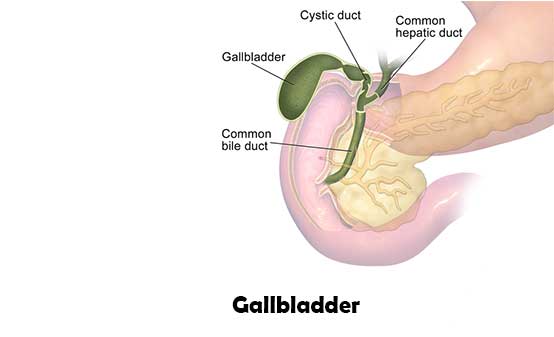If you are treating ulcer, it is important that you read this article to the end. You will find the relationship between ulcer and gallstone.
Unfortunately, not many persons who have ulcer know their ulcer could increase risk of gallstone disease.
Gallstones are hardened deposits of the digestive fluid bile, that can form within the gallbladder (1).
According to reports, they vary in size and shape. it could be as small as a grain of sand to as large as a golf ball.
Gallstone occurs when there is an imbalance in the chemical constituents of bile. This imbalance results in precipitation of one or more of the components.
Basically, this disease is often thought to be a major affliction in modern society.
However, a study says this disease has been in existence for thousand of years.
For instance, gallstones were found in the gallbladders of Egyptian mummies dating back to 1000 BC (2).
It is a long-aged disease and from our studies, we could say, there is a relationship between ulcer and gallstone.
According to available information, there are geographical variations in gallstone prevalence.
Age, Gender And Gallstone
According to a study, gallstones are seen in all age groups, but the incidence increases with age (3).
As a result, it is 4-10 times more frequent in older than younger subjects.
Also, the study says about a quarter of women over 60 years will develop them.
Basically, women during their fertile years are almost twice as likely as men to experience cholelithiasis (gallstone disease).
Other Helpful Articles
- 10 Health Issues Ajwain Seed Can Treat And How To Use It
- 11 Diseases You Never Knew African Velvet Tamarind Could Treat
- 7 Health Benefits Of Flax Seeds Your Body Needs
Increased levels of the hormone estrogen, as a result of pregnancy or hormone therapy, or the use of combined (estrogen-containing) forms of hormonal contraception, may increase cholesterol levels in bile and also decrease gallbladder movement, resulting in gallstone formation.
Causes Of Gallstone
There are a few things that cause gallstone.
First, a chemical imbalance of bile inside the gallbladder could result in gallstone formation.
Although studies are not clear about the cause of the imbalance, there are a few reasons you should know.
Your Bile Contains Too Much Cholesterol
If you have to much cholesterol in your bile, it could result in yellow cholesterol stones.
You see, your liver makes cholesterol too. Unfortunately, when the liver makes more cholesterol than your bile can dissolve, gallstone forms. That is, the left over.
Too Much Bilirubin In Your Bile
In the process of breaking down red blood cells your body makes a chemical – Bilirubin.
This chemical then passes through the liver and is eventually excreted out of the body.
However, some conditions, such as liver damage and certain blood disorders, could make the liver produce more bilirubin than it should.
One of such conditions is low level of iron necessary to make the red blood cell.
A study suggests that iron deficiency leading to anaemia plays a significant role in super saturation of bile. This situation leads to gallstone formation (4).
Furthermore, when your gallbladder can’t break down the excess, bilirubin stones form.
In this case, the hard stones are often dark brown or black.
Ulcer And Gallbladder Disease
You see, stomach ulcer can cause the stomach lining to bleed. This bleeding then leads to anaemia (5).
When this bleeding occurs, it affects iron absorption. This reduces the amount of iron available to form the red blood cell.
Unfortunately, Iron deficiency anaemia (IDA) is the most common form of anaemia world-wide.
IDA is the simple result of an imbalance between iron loss and absorption.
You already know that one of the causes of gallstone is excess bilirubin in the liver.
According to a study, this could have a relationship with iron (6).
Bilirubin comes from two main sources. Roughly, 80% of bilirubin comes from the breakdown of hemoglobin in senescent red blood cells, and prematurely destroyed erythroid cells in the bone marrow (7).
The remainder 20% originates from the turnover of various heme-containing proteins found in other tissues, primarily the liver and muscles.
Iron plays an important role in the production of hemoglobin.
You see, if you do not get enough iron in your diet, your body cannot produce enough red blood cells, or the cells lack hemoglobin.
This is a very unique relationship between ulcer and gallstone.
How Much Iron Do I Need Daily?
According to the National Health Service in Great Britain, men who are over 18 need 8.7mg a day.
Women aged 19 to 50 need 14.8mg a day while women over 50 need 8.7mg a day (8).
Basically, women in child bearing age need more to make up for the loss of iron during menstruation and child birth.
Most times, however, people do not meet up the daily need because they do not eat enough of the foods that are high in iron.
An accumulation will then results in iron deficiency.
For instance, 100 grams of beef (one of the highest sources of iron) contains only 2.6 mg of iron.
This is why in most cases, it is necessary to supplement iron.
If you are not so okay with eating beef because of the some other reasons, you will need to supplement.
Although, there are other plants, seeds and vegetables that are a good source of iron.
But most of them are also high in other compounds that you do not want to consume in excess.
Therefore, for persons that are treating ulcers, it is necessary to eat iron rich foods. Also, iron supplements are available to enable you reach the daily requirement.
Kindly share this with your friends and loved ones to enable them know the need to meet daily iron requirement.


